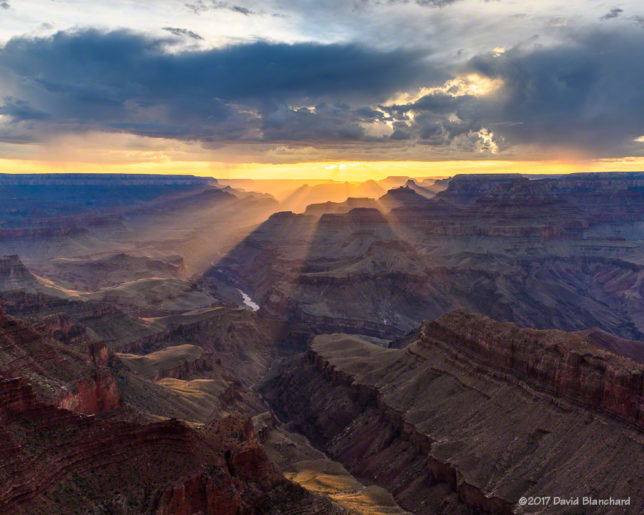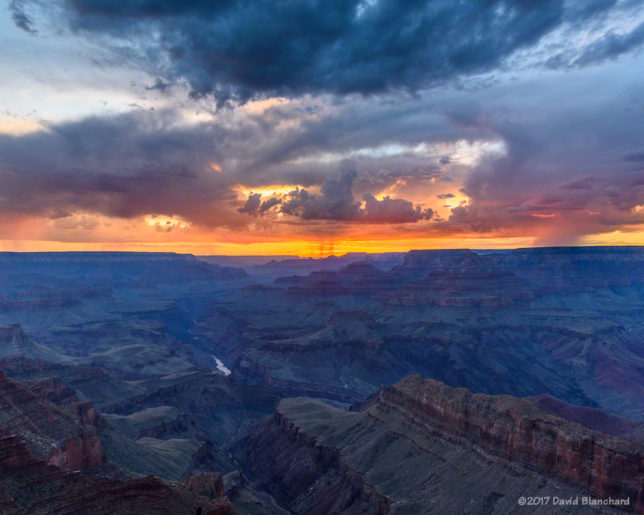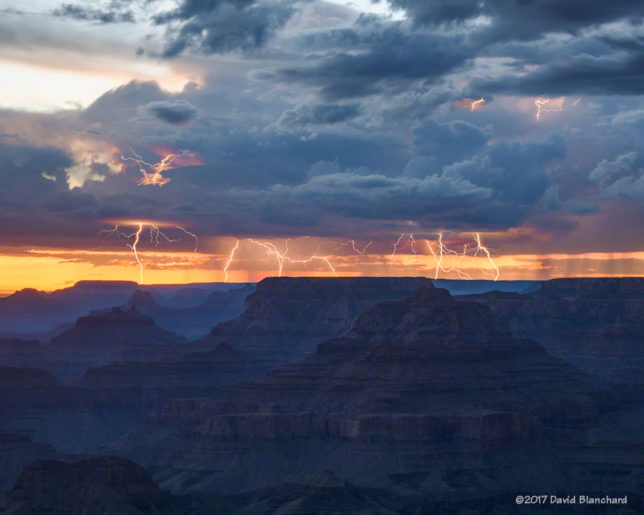The other day provided a good opportunity to photograph both lightning from thunderstorms and sunset at Grand Canyon. Satellite imagery from the new GOES-16 satellite indicated that skies remained clear across western Arizona as well as southern Nevada and California. This would allow the setting sun to appear below the cloud deck from the thunderstorms and—maybe—create a great sunset with the clouds glowing from below as the sun approached the horizon.

Close, but it didn’t quite happen that way. The clouds never took on that beautiful glow. On the other hand, an abundance of monsoon moisture in the lower atmosphere allowed the sun to create beams of light and shadow through the depths of the canyon. This was at its best when the sun was briefly obscured by some mid-level clouds creating some shadows at my location—but with sunlight streaming into the canyon below.

After the sun had dropped below the horizon the beams were gone, of course, but there was still color in the western sky.

The earlier thunderstorms over the area had dissipated but new storms developed about 50 km to my west. This distance meant the visible bolts were fairly small. I wanted big bolts dropping into the canyon near me. What we want and what we get…well, you know.
The radar image shows my location (circle) and the storms to the northwest.


The lightning images are composites of multiple photographs taken over a period of several minutes. The shutter was left open for 15s for each photograph. Some had multiple lightning bolts while others were dark. Even though it was almost 90 minutes after sunset the photographs were still able to pick up twilight colors on the western horizon.
All in all, an illuminating evening (bad pun intended).
